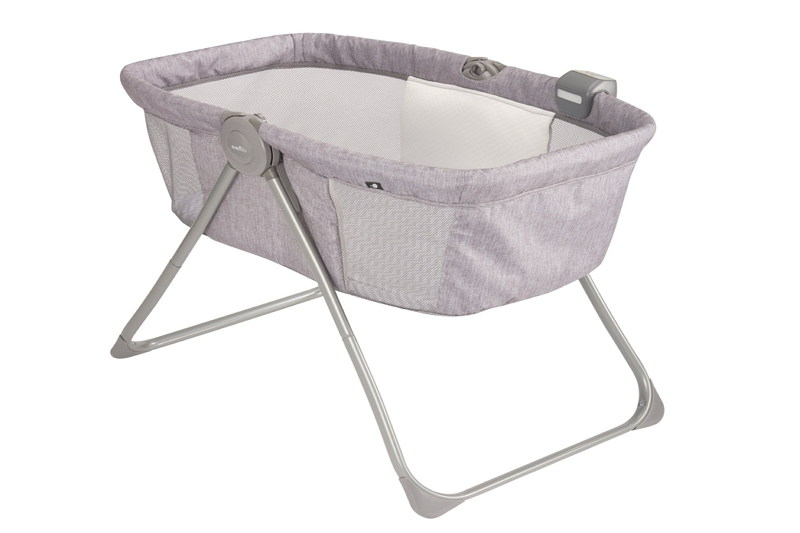Babies And Bassinet: How Long? This is a common question from new parents. When is the right time to transition a baby from a bassinet to their crib? The answer is different depending on how old your child is.
If you have an infant, they will sleep best in a bassinet until they are at least three months old. After that, it’s time to move them into their crib. However, if you have a toddler or older child who can climb out of bed and wants more independence then they may be ready for a big boy or girl bed!

Is your baby still in a bassinet at six months old? If so, you may not need to put her down for the night quite yet. Even if she’s rolling over and sitting up but hasn’t done this on command just yet (or ever), there is safety in numbers when it comes right now!
Before moving onto sleeping alone though–you should consider how well everyone else who lives with/loves this little one seems all snoozing next door as well.
Where is The Best Place For A Baby To Sleep?
The American Academy of Pediatrics (AAP) says that the best place for your baby to sleep is in their parent’s bedroom. They should be placed near you, close by when they are too small and can’t go everywhere with you or without risk of being injured.
This reduces risks associated with SIDS because babies have a higher chance of not getting into danger if there’s someone right next door watching out over them as much!
Researchers found that “early independent sleepers,” babies who slept in their own room before 4 months, slept longer, and for longer stretches, than babies who slept in their parents’ room. At 9 months, these babies were better sleepers, not just compared to those who slept in their parents’ room, but also to those who transitioned to their own room between 4 and 9 months.
Tips To Help From Transition To Cribs
- The switch should be made in stages: Give your daughter a couple of weeks to get used to sleeping in her crib during the day. Then transition and make sure she is always using it as an alternate place for sleep, even if you are home with her or out somewhere new where everyone else can go but not this baby girl!
- Develop a bedtime routine: It’s time to establish some nighttime rituals for your baby, so as you repeat these activities each evening she’ll start to signal that her crib and sleep await.
- Use of the same room but different bed: The transition to a crib is easier if it’s done one step at a time. Consider moving the baby’s old bed into your room for some nights, then once they become adjusted and sleeping in bigger spaces again you can move them back when ready
In order to get yourself ready for taking care of an infant or young child, be sure that all items needed are readily available before guests start coming over because they may not always just happen upon what one needs right away!
- Sleeping in the baby’s room: To help your baby sleep in her own bed, try going with her. It’s not safe for you and the crib would likely break! Instead of sleeping on an unsafe surface like the floor or sofa cushions (which could hurt), why don’t we bunk together? You can get an air mattress if needed; just make sure everyone is comfortable first before trying out this new idea- it might work well since babies usually need more closeness anyway due to being so little.
- Stay for a while: When it comes to teaching your baby how to sleep properly, don’t just drop and dash; give them a chance. One tactic is the chair method of training them for good rest by sitting next to or on the floor as you start dozing off while still in their room with one arm around them so they feel safe (or use something like blankets). The idea here is that over time this will help get babies used to sleeping alone without us having much trouble with bedtime routines anymore!
- Add some comfort: Some parents think they should wait until their baby is 12-18 months old before putting things like stuffed animals and pillows in the crib, but it’s a good idea to make sure your nursery feels welcoming with softer lights or white noise.
The best way for you as an expectant mother/father together can create this atmosphere? Dimming all light sources by 15% (including nightlight), turning on some classical music that relaxes them both — remember not only do we want comfort during those first few weeks after birth; likewise our little one deserves peace too!
Conclusion
When you have a new baby, it can be difficult to let go of the idea that your room will always feel like home. But don’t worry! The transition from co-sleeping with one child while still breastfeeding another may take some adjustment on both sides.
However, this change should ultimately do more good than bad for everyone in your family – especially since babies need their own spaces where they know what’s expected (and allowed) between themselves and others without constantly having people drop in to either end all hours of day long causing chaos just because someone wants something out of curiosity or pure laziness.
